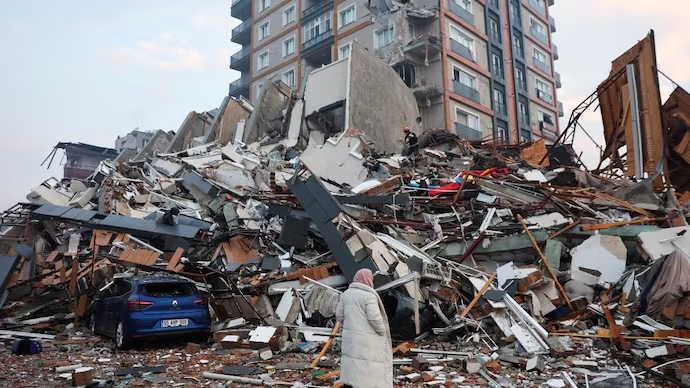Wide parts of Turkey and Syria were ravaged early on Monday by a powerful 7.8 magnitude earthquake, two further strong quakes, and other natural disasters.
According to the US Geological Survey, the earthquake had a depth of 18 kilometres and was centred in southern Turkey, close to Syria’s northern border.
Residents of Damascus and Beirut rushed into the streets in response to the earthquake, which was felt as far away as Cairo and was centred in the province of Kahramanmaras in southeast Turkey.
Why did the earthquake happen in Turkey?
The crust, mantle, and core are the three layers that make up the Earth’s crust. There are fault lines where these divisions between the planet’s parts meet. Here, the layers collide and scrape against one another.
According to researchers, despite these plates’ constant attempts to shift, they are held together by the friction of rubbing up against one another.
They can, however, occasionally snap past each other swiftly when the tension increases, releasing a lot of energy.
Also read: Asaram Bapu given life sentence for a second rape
Under the surface of Turkey, two plates jerked passed one other as one moved west and the other east, causing the deadly earthquake.
The earthquake was a strike-slip quake, in which two tectonic plates passed one another horizontally, according to researchers.
Not the first time
The fault lines beneath the area have made it prone to such earthquakes for ages. The East Anatolian fault zone, where Monday’s earthquake occurred, is a seismically active region that has previously been the source of destructive earthquakes.
In January 2020, Turkey was hit by another powerful earthquake with a magnitude of 6.7, which significantly damaged the country’s eastern region. A 7.4 magnitude earthquake that occurred in 1999 close to Istanbul is thought to have killed 18,000 people.
Why did the earthquake in Turkey turn so deadly?
The quake occurred close to densely inhabited areas. The epicentre was close to Gaziantep, a significant Turkish city and province capital. Buildings that were vulnerable were also located in the affected areas.
Since a significant earthquake had not struck the region in almost a century, both the level of readiness and the structural integrity of the high-rise structures were low. Following the earthquake, thousands of structures reportedly fell, according to officials.
They included “pancake” collapses, in which the top levels of a building fall directly onto the lower floors, indicating that the structures were unable to withstand the shaking.
There is no way to foresee these earthquakes in the interim because the fault lines are still quiet. Researchers have long cautioned that it is very challenging to forecast when a fault line will become active.

